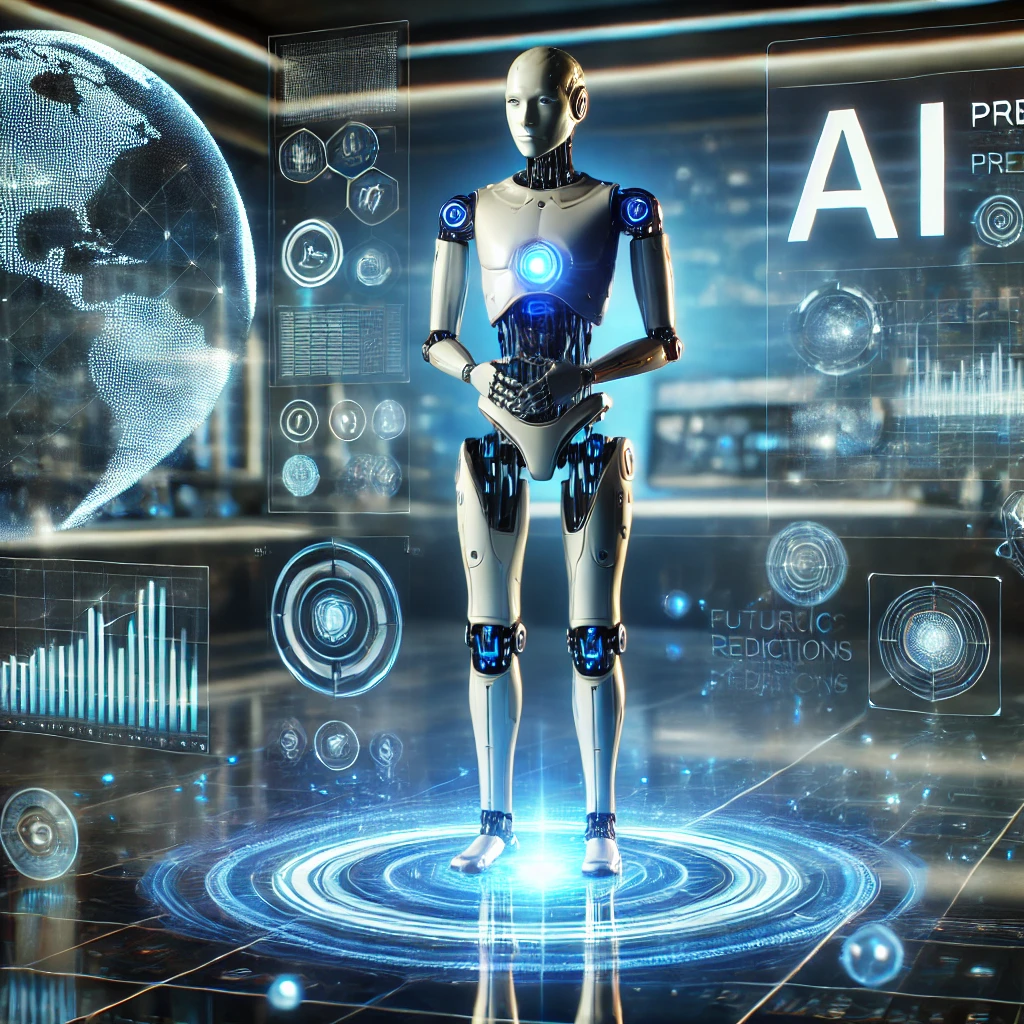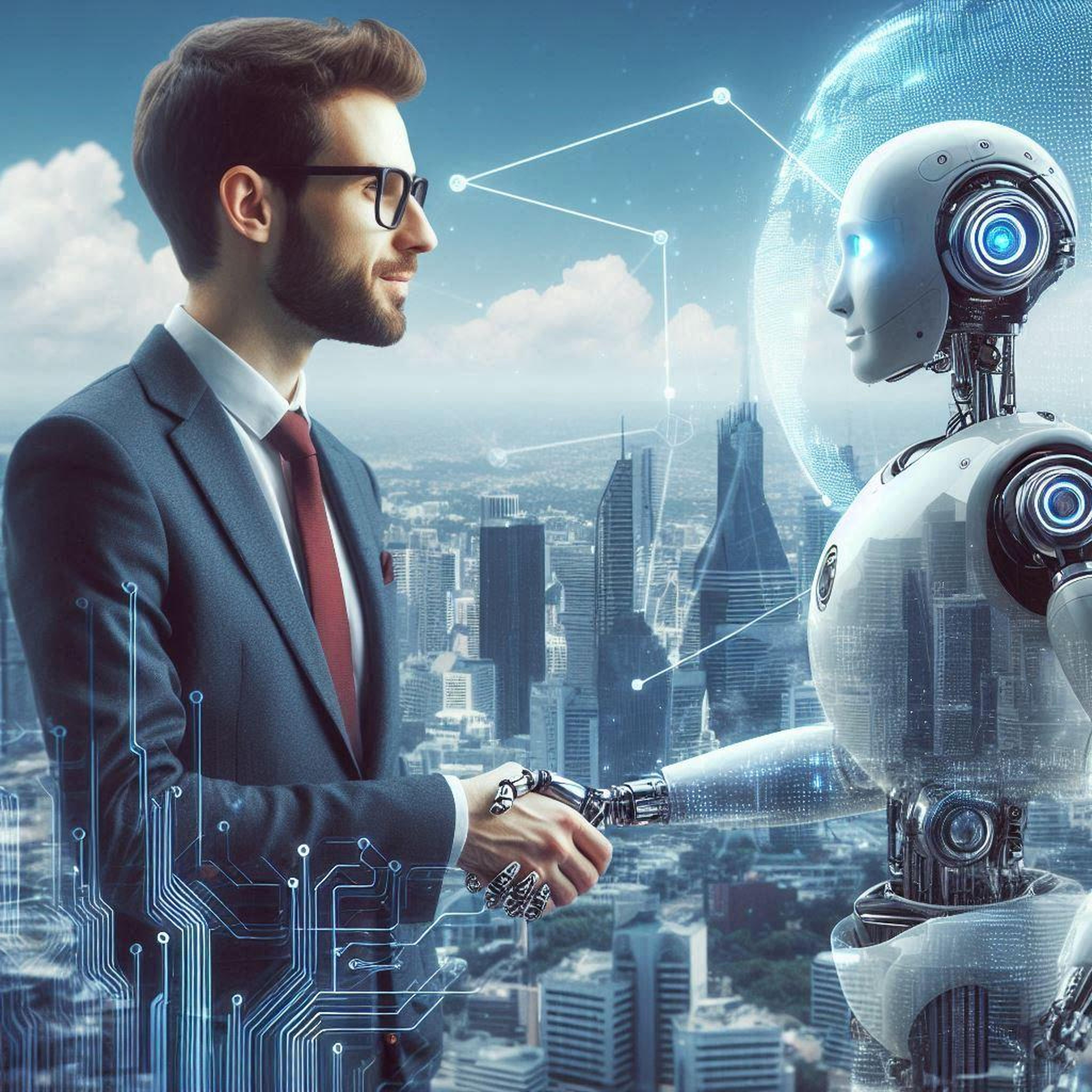What’s Next Future of AI? Predictions for GPT-5 and Beyond
The future of AI stands at a pivotal moment of unprecedented transformation, where the next wave of artificial intelligence advancements promises to reshape our world in ways we’re only beginning to comprehend. As a technology researcher and AI enthusiast deeply immersed in the field’s rapid evolution, I’ve witnessed firsthand how each breakthrough brings us closer to a reality that once seemed confined to science fiction. The developments we’re seeing in artificial intelligence aren’t just incremental improvements – they represent quantum leaps in capability that are fundamentally changing how we think about human-machine interaction and the very nature of intelligence itself. The landscape of AI development has become increasingly dynamic, with each innovation building upon previous breakthroughs at an accelerating pace that defies traditional technological progression patterns.
We strongly recommend that you check out our guide on how to take advantage of AI in today’s passive income economy.
Table of Contents
The Acceleration of AI Progress
Recent discussions at high-profile tech panels have revealed extraordinary insights into AI’s trajectory, particularly regarding the anticipated developments between February 2025 and February 2027. This timeframe is expected to showcase more dramatic advancements than what we’ve witnessed in the previous two years – a remarkable claim considering the unprecedented progress we’ve already experienced. The enthusiasm surrounding AI’s potential impact on scientific discovery has reached new heights, with predictions suggesting that AI systems could compress a decade of scientific progress into a single year. This acceleration could lead to breakthrough developments in critical areas like climate change mitigation, disease treatment, and fundamental scientific research that have traditionally required decades of painstaking work.
The implications of this accelerated progress extend far beyond the laboratory. We’re witnessing the emergence of AI systems that can not only process vast amounts of information but also demonstrate increasingly sophisticated reasoning capabilities. These systems are beginning to show signs of understanding context, nuance, and even abstract concepts in ways that were previously thought to be uniquely human domains. The potential applications of such advanced AI systems span across industries, from healthcare and drug discovery to climate modeling and materials science, promising to unlock solutions to some of humanity’s most pressing challenges.
Intelligence Scaling and Resource Allocation
The relationship between computational resources and AI intelligence follows a fascinating logarithmic pattern that has become increasingly clear through extensive research and development. This pattern suggests that while companies can achieve continuous, predictable gains by investing more resources into training and running their models, the relationship isn’t linear. Instead, each additional investment yields incrementally smaller but still significant improvements. This understanding has profound implications for the development of future AI systems, particularly as we look toward GPT-5 and beyond. The logarithmic scaling law has become a crucial consideration in planning and executing large-scale AI projects, influencing everything from resource allocation to development timelines.
This scaling pattern has led to a sophisticated understanding of how to optimize AI development resources. Organizations are learning to balance the diminishing returns of increased computational power with innovations in architecture and training methodologies. This has sparked a race not just for raw computing power, but for clever optimizations and novel approaches that can extract maximum value from available resources. The implications of these scaling laws extend beyond technical considerations, influencing investment strategies, research directions, and the competitive landscape of AI development.
The Economics of AI Evolution
The economic transformation driven by AI advancement is reshaping entire industries and creating new paradigms for value creation. One of the most striking developments is the unprecedented rate at which AI capabilities are becoming more accessible and affordable. The cost to utilize a specific level of AI capability is dropping by approximately tenfold every twelve months – a pace that significantly outstrips Moore’s Law, which historically doubled computing power every year and a half. This rapid democratization of AI technology is creating new opportunities for innovation and entrepreneurship while simultaneously challenging traditional business models and economic structures.
The declining cost curve of AI capabilities has far-reaching implications for businesses, researchers, and society at large. As advanced AI tools become more affordable, we’re seeing a democratization of access that could level the playing field between large corporations and smaller enterprises. This accessibility is driving innovation across sectors, enabling new business models and creating opportunities for organizations of all sizes to leverage sophisticated AI capabilities that were previously available only to tech giants with massive research budgets.
The Value Proposition of Advanced AI
The relationship between AI intelligence improvements and their socioeconomic value exhibits a super-exponential pattern that defies traditional economic models. Even modest gains in AI capabilities can generate disproportionately large benefits across various sectors of the economy, creating a powerful incentive for continued investment and development. This phenomenon helps explain the massive capital flows into AI development, as investors recognize the potential for returns that could dwarf those of previous technological revolutions.
The impact of this value proposition extends beyond direct economic benefits. We’re seeing AI-driven innovations catalyze improvements in fields ranging from healthcare and education to environmental protection and scientific research. The ability of AI systems to process and analyze vast amounts of data, identify patterns, and generate insights is creating new possibilities for addressing complex global challenges. This has led to a virtuous cycle where successful applications drive further investment, accelerating the pace of innovation and development.
The Future Workforce Landscape
Looking ahead to 2035, we’re approaching a reality where individuals might have access to intellectual capacity equivalent to the collective knowledge of everyone alive in 2025. This projection isn’t just about raw information access – it represents a fundamental transformation in how we think about knowledge work and human potential. AI agents are evolving from simple tools into sophisticated virtual co-workers, capable of handling complex tasks and collaborating with humans in increasingly natural and productive ways.
The integration of AI into the workplace is creating new paradigms for human-machine collaboration. These AI systems are becoming more than just tools – they’re evolving into true cognitive partners that can enhance human capabilities in unprecedented ways. This transformation is particularly evident in knowledge-intensive fields, where AI agents can help process and analyze vast amounts of information, identify patterns, and generate insights that might take human teams months or years to discover.
Transformation of Professional Roles
The evolution of AI capabilities is fundamentally changing how we think about professional expertise and specialization. In software engineering, for example, AI systems are approaching the capability to handle projects that would typically require several days of work from experienced professionals. While these systems still require human oversight and direction, their ability to scale – imagine thousands or millions of such agents working simultaneously – could revolutionize how we approach complex projects and problems.
This transformation extends beyond technical fields. We’re seeing AI systems demonstrate impressive capabilities in creative domains, strategic planning, and even interpersonal communication. The implications for professional development and career planning are profound, suggesting a future where the most valuable skills may be those that complement AI capabilities rather than compete with them. This shift is driving a reevaluation of traditional professional roles and creating new opportunities for those who can effectively leverage AI tools to enhance their work.
Economic and Social Implications
The economic implications of advanced AI development rival or exceed the impact of previous technological revolutions like electricity, computers, and the internet. We’re witnessing fundamental changes in how value is created and distributed throughout the economy. The price of goods and services is likely to see significant changes, with the cost of intelligence-driven products and services potentially dropping dramatically. However, this could also lead to interesting economic dynamics, where certain inherently limited resources, such as land, might see dramatic price increases.
These changes are creating new challenges and opportunities for economic policy and social planning. The rapid pace of AI advancement is forcing us to reconsider traditional approaches to education, workforce development, and social support systems. As AI capabilities continue to expand, we’ll need to develop new frameworks for ensuring that the benefits of these technologies are distributed equitably and that we’re preparing people for success in an AI-enhanced economy.
Innovation and Entrepreneurship
The democratization of AI capabilities is catalyzing a new wave of entrepreneurship and innovation. We’re seeing the emergence of “AI-native” companies that build their entire operations around these technologies from the ground up. These organizations are able to achieve levels of efficiency and innovation that would have been impossible just a few years ago, potentially disrupting traditional industries and creating entirely new markets.
The ability to leverage sophisticated AI tools is becoming a key differentiator for successful businesses. Companies that can effectively integrate AI into their operations and strategy are gaining significant advantages in efficiency, innovation, and market responsiveness. This is creating new opportunities for entrepreneurs who can identify novel applications of AI technology or develop new business models that leverage AI capabilities in creative ways.
Preparing for the AI Future
As we stand on the brink of these transformative changes, it’s crucial to consider how society can best prepare for and adapt to this new reality. The future workforce will need to develop new skills and ways of working alongside AI systems. This isn’t just about technical training – it’s about developing the cognitive and emotional capabilities that will complement AI strengths and enable effective human-machine collaboration.
Educational systems will need to evolve to prepare people for a world where collaboration with AI is the norm rather than the exception. This involves not just teaching technical skills, but also developing critical thinking, creativity, and emotional intelligence – capabilities that will become increasingly valuable as AI handles more routine cognitive tasks. We’re seeing the emergence of new educational approaches that combine traditional learning with AI-enhanced tools and methodologies.
Philosophical and Societal Considerations
The rapid advancement of AI technology raises important philosophical questions about the nature of intelligence, consciousness, and human potential. As AI systems become more sophisticated, we’re forced to reconsider our understanding of concepts like creativity, decision-making, and even consciousness itself. These questions aren’t just academic – they have practical implications for how we design and implement AI systems, and how we think about their role in society.
The potential of AI to enhance human capabilities while simultaneously disrupting traditional economic and social structures creates both opportunities and challenges. We need to carefully consider how to ensure that AI advancement serves the greater good, promoting human flourishing while mitigating potential risks and negative impacts. This involves developing ethical frameworks for AI development and deployment, ensuring transparency and accountability in AI systems, and creating mechanisms for sharing the benefits of AI advancement broadly across society.
Looking ahead, the future of AI, particularly with developments like GPT-5 on the horizon, promises to bring unprecedented capabilities that could help solve some of humanity’s most pressing challenges. However, realizing this potential will require careful consideration of how we integrate these powerful tools into our society and ensure they serve the greater good. The decisions we make today about how to develop and deploy AI technology will shape the future of human civilization for generations to come.

We strongly recommend that you check out our guide on how to take advantage of AI in today’s passive income economy.




